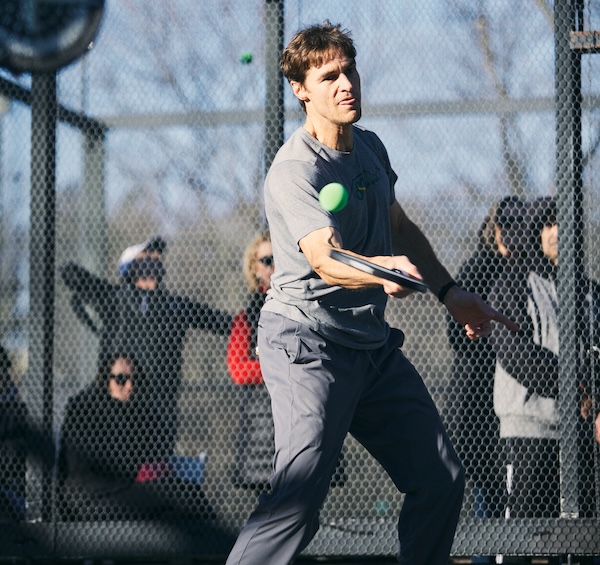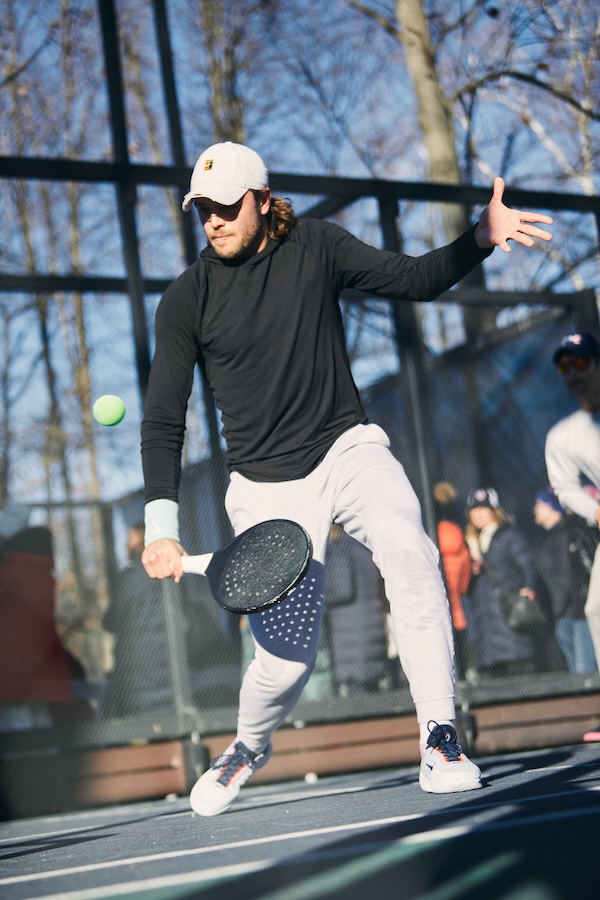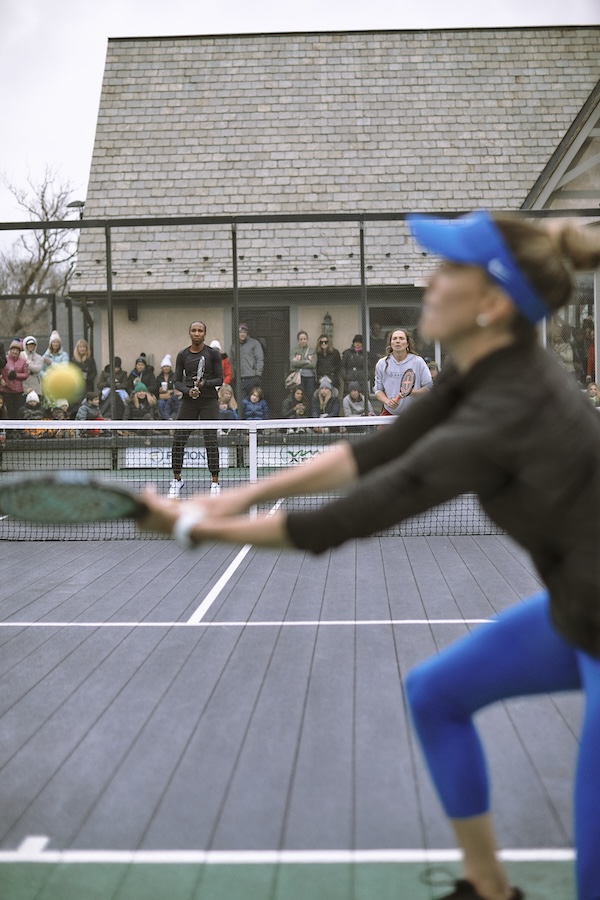NEWS
Gerri-isms: Strategy is Essential

Hall-of-Famer Gerri Viant is the Yogi Berra of platform tennis—except her sayings make sense. Say what? Say Strategy.
If there has ever been someone qualified to speak about strategy, it is Live Streaming Commentator and Hall-of-Famer Gerri Viant, a 13-time APTA National Champion, nine of those won with partner Sue Aery. (Christi Hays interviewed Viant for this article in Platform Tennis Magazine. Here is an abridged version.)
Strategy is essential to the success of every paddle team. It is the rudder that steers the ship. Without it, even teams with amazing racquet skills will have trouble sustaining success. Each team’s strategy is very individually tailored to the strengths of that partnership. Partners need to be completely on the same page.
Every Shot Has a Purpose
Every time you make your opponent touch the ball one more time you are bringing the Last Ball Theory into play. That theory states whoever touches the ball last has an 85-90% chance of losing the point. If you are just “happy to hit” and randomly send balls back in the court, chances are you will set up the opponent’s strongest shot. Your team needs to be able to identify the opponent’s weakness and accurately hit your shots to those spots on the court.

Cumulative Trauma
Finding a backcourt opponent’s number means finding the number of shots he/she can handle in a row. Cumulative Trauma is part of the mental skill set you need to develop. Your game plan is designed to keep your opponents off balance, guessing and reacting to your shots. You want your team to dictate play and to make your opponents uncomfortable. You need to recognize when it is happening and keep the pressure on a player or a certain play that your opponent is struggling with. If one of your opponents is making consecutive errors, keep giving them a chance to continue making those errors. For example, if one of your opponents has made a couple of errors from the backcourt, you might look to direct play his/her way when he/she is at net. Follow that player, don’t let ‘em off the hook. Keep the pressure on.
Screens Are Your Friends
Once players get to a certain level, screen play can be the most enjoyable part of the game. Screens are like another partner. It is important to demystify the screens. The screens give you time and allow you to have choices. The fun of playing the screens is when you can disguise your shots, hold the ball, get your opponents to commit to looking for a drive, or stepping back looking for a lob. That is your chance to be tricky! Isolate that skill, take lessons, and devote time to one-on-one drilling. If you only practice your screens during a match or team practice, you are limiting the number of balls that you see. You build confidence through success. Practice, practice, and more practice with a purpose.

It’s Not a Game of Offense and Defense - It’s a Game of Attack and Counterattack.
It became a mindset for me when I was competing. I never wanted to feel like I was on the back foot. Even if I was pushed back deep by a lob, I was always thinking about where to place the ball to counter that lob that would set us up for the next shot. Or I would ask myself, “How can I use this low dig out of the screen to create an opportunity for attack rather than defensively playing a shot?” It’s all about how you see it, feel it, and react to what is happening.
Everything Has a Beginning, a Middle, and an End
Start the point, serve, return, first volley or stay back, but get your team into the point by not missing any of those first three hits. In the middle, build the point, make smart shot and placement selections, and be more than willing to hang in there until the right shot comes your way. For the end, it is gratifying to be able to finish the point with a winning slash, drive, or drop shot, but there’s also the quiet celebration of creating opportunities for your opponents to miss as well.


